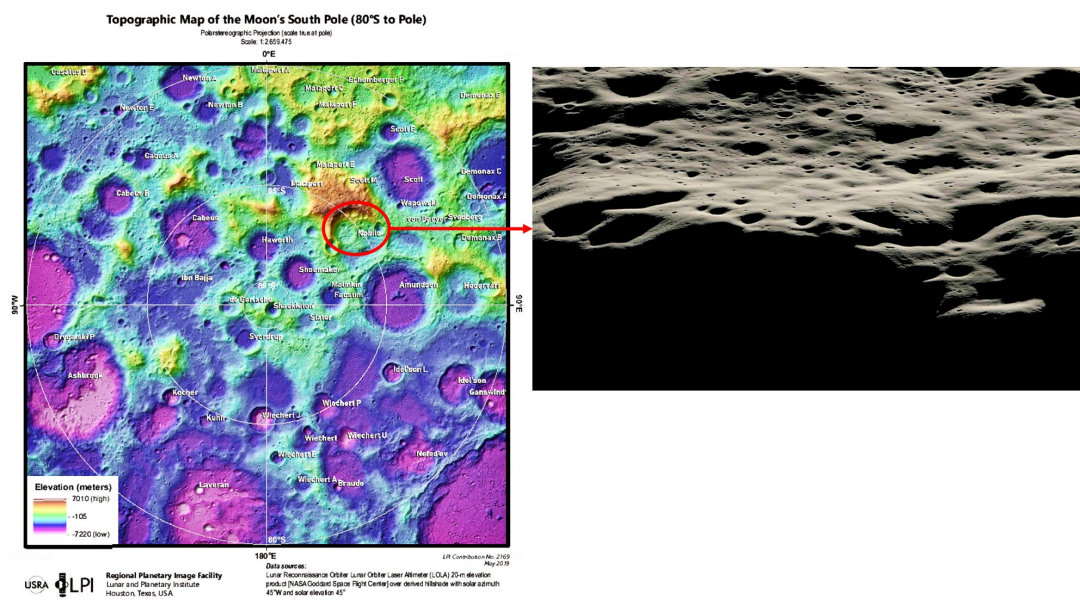
Water means life and survival, even on other celestial bodies. The search for corresponding sources in the form of ice, and thus the prerequisite for life beyond Earth, is one of the most important aspects of space exploration. Even at the South Pole on our nearest celestial body, the Moon, science suspects ice underneath or on the surface. A new NASA mission is to intensify the search at the South Pole, which has never been visited before. The space agency is relying on VIPER for this.
The name of the vehicle currently under development at NASA is an abbreviation for “Volatiles Investigating Polar Exploration Rover” (VIPER). This is a mobile robot with three different measuring instruments and a drill to search for ice underneath the surface of the moon down to a depth of one metre. The robot, which measures just 1.5 by 1.5 by 2.5 metres, weighs around 430 kilos and is electrically powered. Solar panels on the side provide the electricity and the four-wheeled vehicle should be able to move at a maximum of 0.8 kilometers per hour over the lunar surface. Communication with Earth is ensured via a direct X-band via the “Deep Space Network” communication system.

Looking for ice at the South Pole actually sounds trivial. But while it is known that on Earth this area contains the largest known quantities of ice, the situation is quite different on the Moon. It is true that since 2009, various lunar missions had detected ice and water from altitude. But since no manned mission has ever landed on this side of the Moon, and more accurate mapping of potential raw materials for future missions has never been done before on another celestial body, NASA is looking to fill that gap with its VIPER mission. “We do have a lot of data that there is water ice there — we’re not going in blind,” Amy Fagan, a planetary scientist at Western Carolina University, tells the journal Nature. The landing site will be near the Nobile crater, which experts believe has the best conditions for a successful search. The crater lies almost completely in the shadow area on the moon and is surrounded by smaller craters where ice is suspected. Nobile Crater is part of the South Pole-Aitken Basin, a 2,500-kilometer-diameter region dotted with numerous craters, at the southern end of which lies Shackleton Crater and the geographic south pole of the Moon.

But exactly where the precious ice and water are located is not clear, and it is precisely such details that play an essential role in further missions and research, other scientists believe. Because the ice is not just lying around everywhere and could also be hidden in the ground. Although there is strong evidence that ice lies in the deep craters, protected from the sun’s rays. But ice could also be found beneath the surface. To explore this, the VIPER has a drilling system that can be used to search for ice at depths of up to one metre. Three spectrometers will help to identify possible drilling sites more precisely. According to NASA, VIPER is very sensitive and can detect even the smallest traces of ice in the drilling samples.
The VIPER mission is only one part of a larger project. ARTEMIS aims to advance lunar and space exploration, including putting humans back on the moon and setting off from there to other planets. Water will play a central role as a raw material. On the one hand for the supply of the astronauts, on the other hand as a component of fuel. But not all scientists think that this is a good idea. Because the ice is also a data archive about the formation of water on Earth and other planets and could have stored numerous answers about our solar system. Drilling into the ice could therefore contaminate and destroy these valuable archives. To prevent this, these researchers are calling on NASA to first collect samples from known locations, such as craters, and thus protect this valuable data. But NASA says there is no source of funding for that at the moment. Another possibility to search for ice and water is with the satellite “Lunar Trailblazer”. It could map the region more accurately in advance and identify sites. But NASA has already waved off the idea and does not want to launch the small satellite until 2025. They believe that VIPER will find the right places to drill for ice where no man has gone before.
Dr Michael Wenger, PolarJournal
More on the subject:





